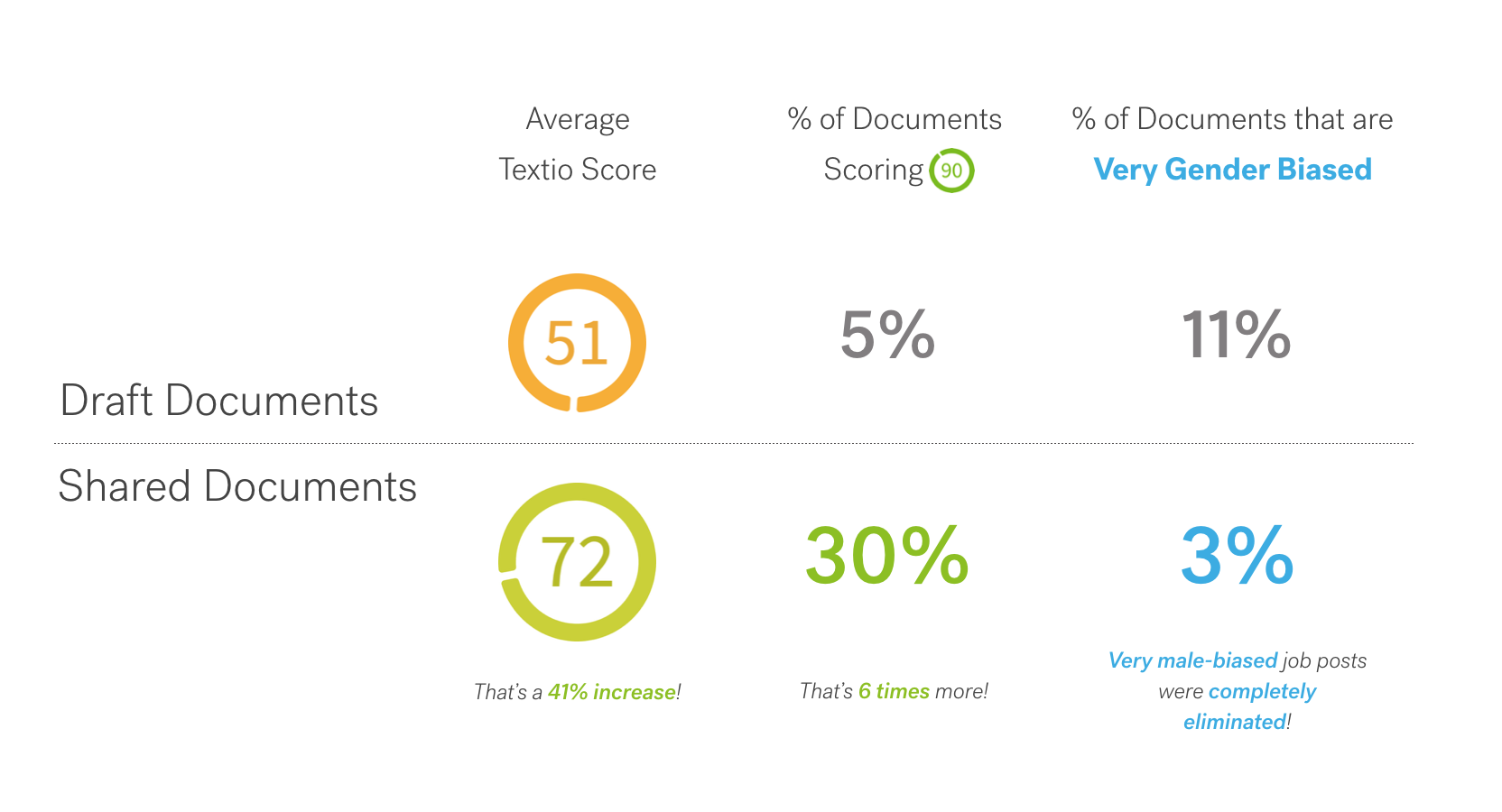Why sharing is critical to job posts that attract the most qualified candidates

Have you ever wondered where job posts come from? Every company creates them differently but it generally it involves a hiring manager laying out some requirements, or maybe even writing the whole thing. The hiring manager then sends the document to their recruiter, who reviews it with finance, legal, brand, compliance…any number of people. Changes are communicated back to the hiring manager, who sends revisions back to the recruiter for approvals, and so on.
It’s not hard to see how cumbersome this process can become, or how messy it can get with version control. When you’re busy with various other non-hiring-related tasks, the last thing you need is chaos. You need a simple solution from the very beginning.
This is why sharing is a not only a core feature in Textio, but one that determines how well your job post will perform in today’s hiring market.
With the power of augmented writing at their fingertips, hiring managers can start writing a job post in Textio. By clicking share and copying the link, they enable everyone who needs to weigh in on the posting to do so exactly when their input or approval is needed. It’s simple to get recruiting, legal, compliance, brand and everyone else on the same page (pun intended!).

Sharing documents not only makes it easy for you to get your work done, it also improves efficiency for your team. Some future hiring manager can simply search in the Textio job library for job posts that get people to respond and use that as a backbone to update a new role that is going out.
And it’s not just us saying that sharing is better. Textio customer data tells us that teams that share their work improve their Textio scores as they move through the collaborative process. When Johnson & Johnson added hiring managers to their Textio workflow, the collaboration with recruiters led to an average score that was 21 points higher than documents that remained private. The number of documents scoring a 90 or above increased by 25%, and the presence of gender bias decreased substantially. Clearly two (or three or four) heads really are better than one.

Special thanks to Pete Kerr for his input and feedback on this piece.